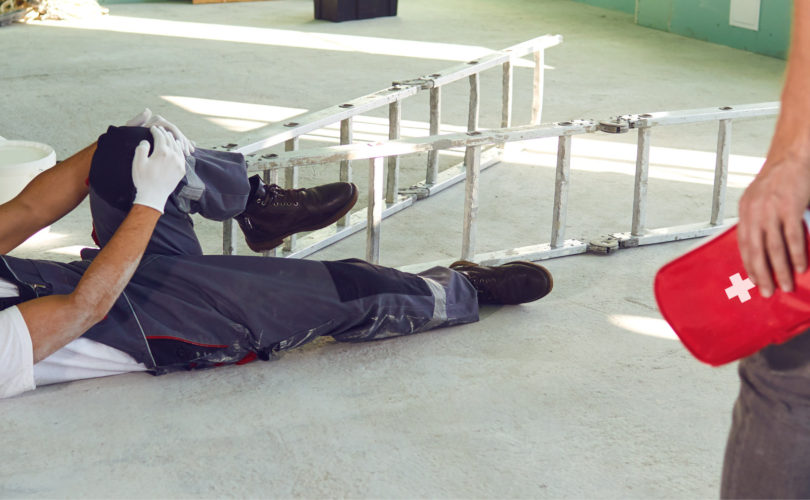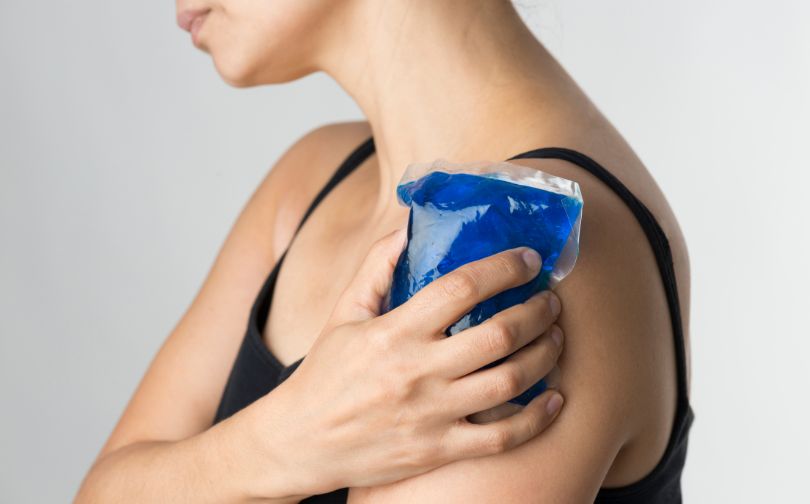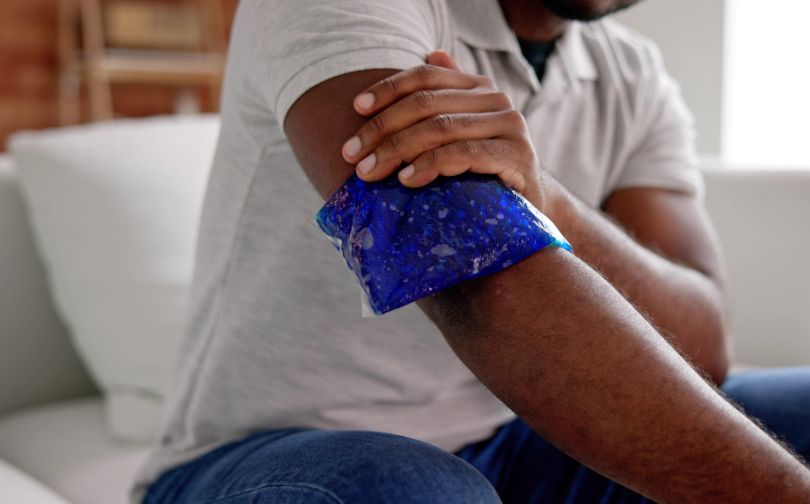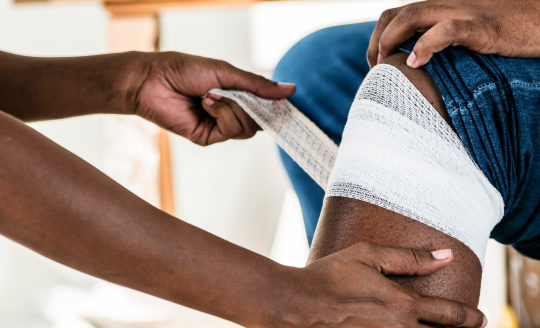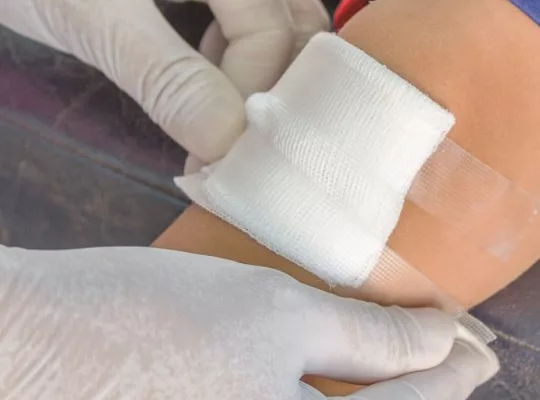Injuries happen when we least expect them, and they often bring discomfort, pain, and swelling. Whether from a sports mishap, a fall, or a daily activity gone wrong, the first step to relief usually involves quick and effective pain management. Ice packs, known for reducing swelling and numbing sore spots, can be lifesavers.
Using ice packs might seem straightforward, but applying them the wrong way can actually cause skin damage or delay healing. Did you know that applying ice for too long can lead to frostbite on the skin?
In this article, you’ll learn exactly how to use ice packs safely and effectively, helping to speed up recovery without causing further discomfort.
Safety Note
Both heat and cryotherapy should have their uses limited. Overexposure to heat or cold can easily cause serious damage to the skin and underlying tissues. Only use the packs in 20-minute intervals, and with 30-40 minutes between each session at a minimum. Always wrap the ice pack in a cloth or dish towel before using it to protect your skin.
What’s the Difference Between Disposable and Reusable Ice Packs?
Disposable ice packs are packets with two interior bags. One holds water; the other holds a chemical such as calcium ammonium nitrate. When you break the interior bags and shake them, the water and chemicals mix and begin to react. This type of reaction is endothermic, meaning it absorbs energy as heat to function. The endothermic reaction is what causes the cold sensation.
The content of reusable ice packs varies depending on the manufacturer, but they all contain water, an agent that lowers the freezing point (so it stays frozen for longer and acts faster), silica-gel to keep the ingredients combined and add weight, and a thickening agent, which makes it easier for the pack to take shape.
Using Ice Packs on the Head and Neck
Head and face injuries tend to cause a lot of bleeding and swelling because there are a lot of blood vessels close to the skin in those areas. This makes ice packs an invaluable asset for these types of injuries.
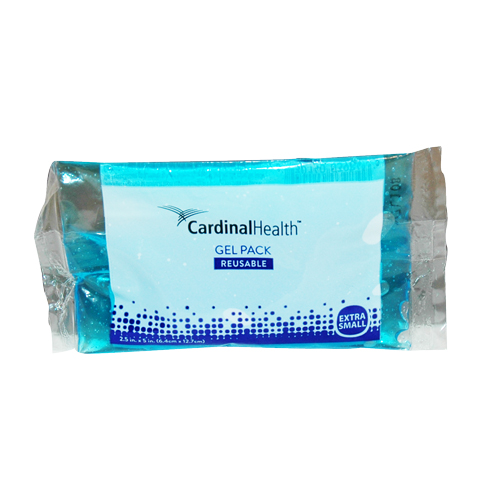
There are two effective ways to cure a headache with a reusable cold compress will help numb the pain. Placing the pack on the back and sides of your neck and on your forehead and temples Placing the compress on the neck will cool the blood going through the carotid artery, which directly feeds into the brain and will reduce pain. In contrast, placing the pack directly on your forehead/temples will cool and contract the vessels that go around the skull.
Using Ice Packs for the Face and Eyes
As with head and neck injuries, reusable cold compresses are great for face and eye injuries. I’m sure everyone is familiar with the image of a fighter using a frozen steak to cover a black eye. While this is iconic imagery, it is not a great idea. Steak will not retain the cold as efficiently as an instant cold pack, and will also expose your eye to bacteria that may cause infection or illness. Since the face and eyes have very little fat and muscle, you should limit exposure to the cold to 10–15 minutes instead of the full 20 to prevent damage to the tissue.
Using Ice Packs for the Chest and Back
The chest, back, and limbs are going to need larger packs. Whether you need to treat sciatica, muscle spasms, or any other form of lower back pain, reusable and instant packs come in a variety of sizes to properly treat any area of the body. If you are treating lower back pain, lay on your stomach so the bed or couch does not reduce the effectivity of the ice pack. Make sure to let your skin come back up to temperature before reapplying an ice pack.
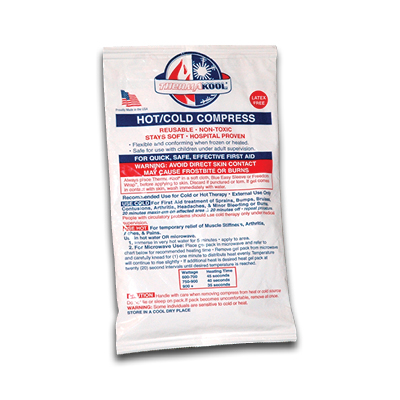
Using an Ice Pack for the Legs and Arms
Cold packs should also be used in combination with elevation to further reduce swelling. Using both an ice pack and elevation will speed up the healing process significantly. Elevating forces the blood to fight against gravity, reducing blood flow and therefore reducing swelling. Using medical tape or pre-wrap to secure the ice pack will make treatment much easier. Securing the pack will let you keep the injured limb elevated and treat it without using your hands.
Which Is Better?
Reusable and disposable ice packs have their own advantages and drawbacks that make them better or worse in certain situations. Disposable ice packs are better for quick treatment while travelling because they can be activated at any time and don’t require refrigeration. Disposable ice packs should be kept securely in a med kit so they don’t get activated accidentally.
Reusable ice packs are better for non-emergency, at home pain relief. Since you have to refrigerate reusable cold packs they require significant waiting time before use. As well, since they are reusable, you only have to buy one or two.
In short, put disposable ice packs should be in first aid kits and reusable ones are for home use.
What Are the Most Common Mistakes While Using Ice Packs?
- Applying Ice Directly to the Skin: Placing ice packs directly on the skin can cause frostbite or skin irritation due to the intense cold. To avoid this, wrap the ice pack in a thin cloth or towel, creating a protective barrier that prevents skin damage.
- Using Ice Packs for Too Long: Prolonged use of ice packs can harm nerves and restrict blood flow, increasing the risk of further injury. Stick to a 10-20 minute limit per session, allowing breaks in between to avoid these issues.
- Incorrect Positioning of the Injury: Failing to elevate the injured area can reduce the effectiveness of ice therapy. Elevating the injury above heart level helps minimize swelling more efficiently by encouraging fluid drainage.
- Skipping Rest During Recovery: Relying only on ice packs without sufficient rest can delay healing. Combining rest with ice therapy gives the body time to recover, supporting a more effective healing process.
- Using Ice Packs Not Meant for Medical Use: Ice packs designed for food storage or general cooling may not fit the body well or maintain an appropriate temperature. It’s best to use products made specifically for therapeutic use to ensure proper treatment and comfort.
Conclusion
Using ice packs properly offers quick relief and speeds up recovery for a variety of injuries. Cold compresses help with pain management by reducing swelling, inflammation, and nerve activity, making them ideal for injuries like sprains, bruises, and headaches.
Reusable packs work well for home use, while disposable ones provide convenience during travel or emergencies. Each type has its advantages, so keeping both in your medical supplies ensures you’re prepared for any situation.
Safe usage is key. Limit sessions to 10–20 minutes, always wrap the pack in cloth, and allow the skin to return to normal temperature before reapplying. Pairing ice therapy with rest and elevation can further enhance healing, helping you recover efficiently without unnecessary setbacks.
FAQs
When Is The Best Time To Use Ice Packs On An Injury?
Ice packs are most effective within the first 48 hours after an injury. They help reduce swelling and pain by constricting blood vessels. Applying ice soon after an injury can significantly enhance recovery and minimize discomfort, making it an essential first aid step.
Can I Use Ice Packs For Chronic Injuries?
Yes, ice packs can be beneficial for chronic injuries after activities to manage inflammation. They help alleviate pain and discomfort but should be avoided before engaging in physical activities, as they may affect circulation and muscle warmth, potentially increasing the risk of further injury.
How Often Should I Apply Ice Packs?
Apply ice packs at least three times daily, or as needed, for pain and swelling relief. For acute injuries, using ice every hour during the first 72 hours is advisable. This frequency helps control inflammation and promotes quicker healing while managing discomfort effectively.
What Precautions Should I Take When Using Ice Packs?
When using ice packs, always wrap them in a cloth to prevent frostbite. Avoid applying ice directly to the skin. Additionally, do not use ice packs on areas with poor circulation or sensation, as this could exacerbate issues and lead to further complications.

